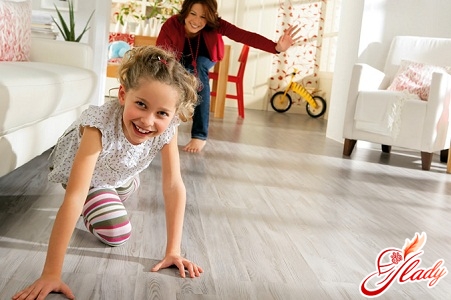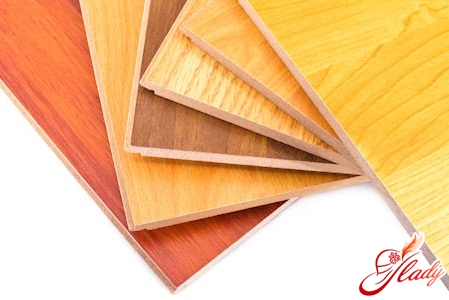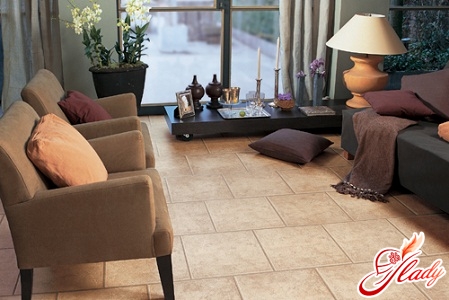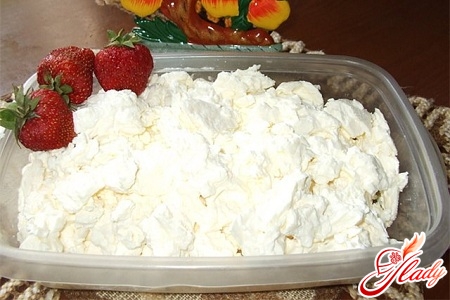 The popularity of laminated coatings in finishingflooring is gaining momentum, and the huge variety of shades and types of decors of this material can please anyone, even the most demanding taste. Therefore, in order to answer the question of how to choose the right laminate, certain knowledge of its advantages over other materials and the ability to understand the performance characteristics of this coating are required.
The popularity of laminated coatings in finishingflooring is gaining momentum, and the huge variety of shades and types of decors of this material can please anyone, even the most demanding taste. Therefore, in order to answer the question of how to choose the right laminate, certain knowledge of its advantages over other materials and the ability to understand the performance characteristics of this coating are required.
Advantages of laminate
Laminate really has a lot of propertiesAdvantages: it does not fade in the sun, it is environmentally friendly, stains of various origins can be easily removed from its surface using ordinary acetone. The laminate coating does not contain any substances harmful to humans, so people with increased allergens feel most comfortable in rooms with floors finished with this material. Laminated flooring is characterized by a very large margin of safety, it is not afraid of any mechanical impacts. You can walk on a floor with laminate in heels, move furniture, drop cigarette butts - no traces remain on it. Another undeniable advantage over such a material as parquet is that it does not require any special treatment - neither varnishing, nor grinding, nor scraping. Laminated flooring is very easy to assemble, which is carried out by simply snapping the panels together using a tongue and groove cut. Such a coating can be easily dismantled in the event, for example, of moving to a new place of residence. Laminate construction Laminate from different manufacturers may differ slightly in terms of production method and type of raw materials used, but in any case, the laminate construction consists of at least four layers: a base (a fiberboard or chipboard-based board), the surface of which is covered with a decorative layer, a protective layer, and the bottommost stabilizing layer. It is also possible to use various additional layers. Depending on various technical characteristics, the thickness of the top layer, and the amount of melamine resins in the composition, the wear resistance of the laminate and its scope of application vary significantly.
Operating Classes
Choosing the right laminate is not difficult at all ifhave an idea of its classification by performance characteristics. Laminate undergoes various tests according to 18 tests for resistance to abrasion, scratches, impact resistance, light fastness, moisture resistance, etc. Based on the results of these tests, the laminate is assigned a certain performance class. By type of application, there are two main groups of laminate - for public (commercial) and residential premises. For commercial use in places with high traffic, performance classes 31, 32 and 33 are used. The highest wear resistance is in class 33 laminate, it can be used in airports, shopping centers and other large public institutions. Class 31 laminate is quite suitable for hotel rooms and small office premises. For residential premises, class 21, 22 and 23 laminate is used, the service life of which should not exceed 5-6 years. The greatest load on the floor occurs in rooms such as hallways and kitchens, so it is advisable to use class 23 here. Living rooms and children's rooms are less passable, so you can use class 22 laminate in them. In offices, bedrooms and home libraries, the load on the floor is very small, so you can use class 21 laminate here. Meanwhile, to increase the service life of the laminate, professionals recommend using commercial premises for home use. This increases its service life several times. The service life of the laminate under these conditions of use can reach 15-20 and even 25 years. Therefore, some manufacturers provide a lifetime warranty on their products.
Laminate Thickness
When choosing laminate, it is very important to take it into accountthickness, since the floor's behavior under load and its thermal conductivity depend on it. The most optimal thickness is considered to be 8 mm, but if you want to save money, you can choose a laminate with a thickness of at least 7 mm. However, when using laminate flooring together with heating systems, its smaller thickness will require less heat to heat the room. But at the same time, it is worth considering that with a laminate thickness of more than 8 mm, it is more resistant to various loads.
Lacks of laminate
To be fair, it is worth noting the shortcomings as well.laminate, although in fact there are relatively few of them. Perhaps its main disadvantage is its low water resistance; with prolonged contact with water, the laminate coating can undergo significant changes in appearance. It should be noted that the main thing is not to confuse water resistance with moisture resistance of this material, since under the condition of relatively constant humidity it can last quite a long time. Laminate can be wet cleaned, the only thing is to be careful and use special liquids for this. Another serious disadvantage of laminate is its boominess, which is associated with the high resonant capacity of the chipboard panel lying at its base. When walking and falling objects, a fairly loud sound may occur, which, however, can be quickly accustomed to. To some extent, noise-insulating substrates, which are produced by many companies supplying laminate to the market, can save from this inconvenience. Another rather subjective disadvantage is the unnaturalness of this finishing material. Laminate flooring is hard to compete with parquet and solid wood flooring, but at the same time it is an absolutely safe and environmentally friendly material.
Laminate selection by color
How to choose the right laminate by color?This question is really relevant for those people who are doing repairs in their apartment on their own, without the help of a designer. Let's try to figure out this problem together. The perception of the interior as a whole largely depends on the correctly selected color and texture of the laminated flooring. Therefore, you should take this seriously, thinking over all the points related to its choice in advance. You should not blindly follow fashion and listen to the advice of numerous friends when choosing a flooring for your own home. Most often, laminate is chosen based on the color of the doors that you plan to purchase. You should also focus on the general concept of the interior, because laminated flooring, selected to contrast with the furniture, looks especially advantageous in the interior. Today, the most popular types of laminate are those that imitate valuable wood species - beech, oak, walnut. Dark laminate is often bought for hallways and living rooms with light-colored upholstered furniture, but it is worth keeping in mind that dust and dirt are very noticeable on its surface. Bright, contrasting textures are suitable for decorating a living room and a children's room, while laminate with soft color transitions will be more appropriate in the bedroom. We recommend reading:









